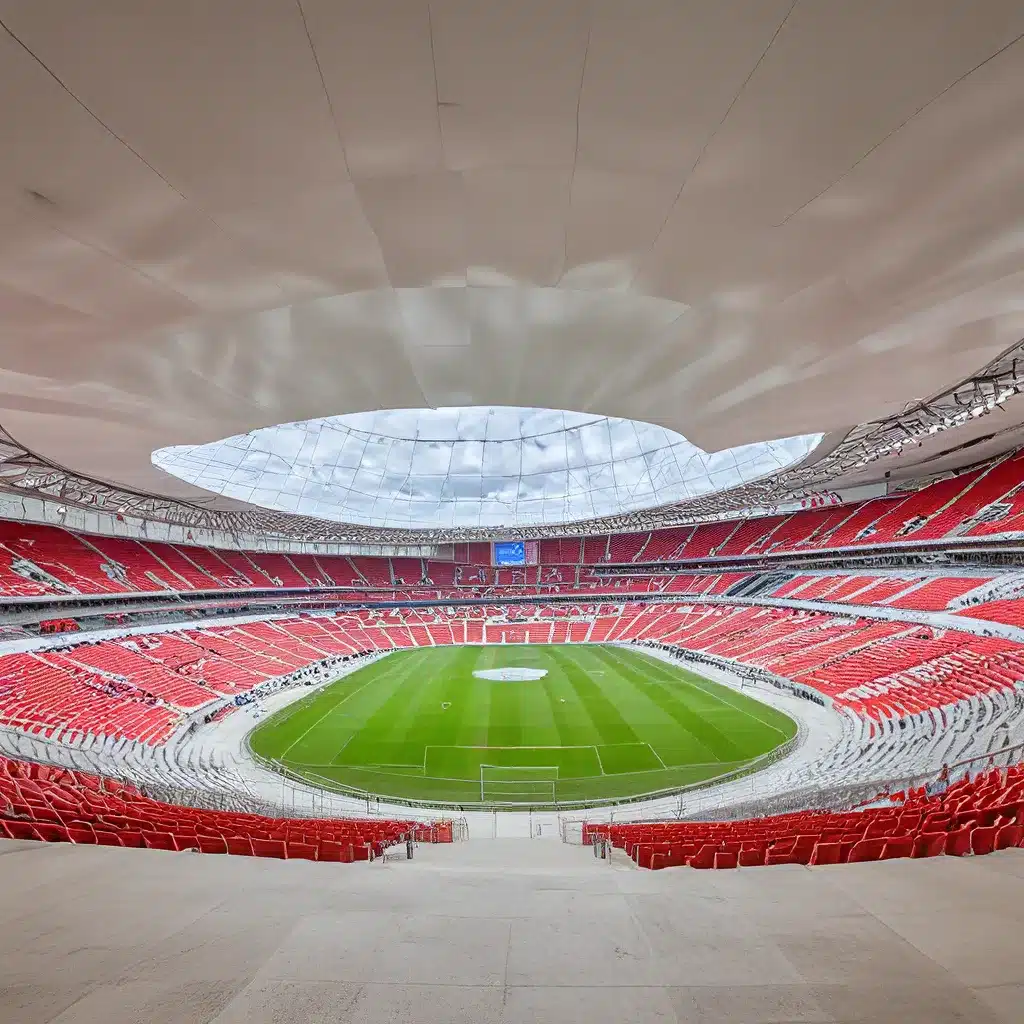
In the heart of Bavaria, nestled in the vibrant city of Munich, stands a true architectural marvel – the Allianz Arena. This iconic football stadium has not only captured the hearts of sports enthusiasts but also captivated the global audience with its striking design and innovative features. As the host venue for several matches during the upcoming 2024 UEFA European Football Championship, the Allianz Arena is poised to take center stage, showcasing the region’s rich cultural and sporting heritage.
Architectural Brilliance: The Allianz Arena Unveiled
Opened in 2005, the Allianz Arena is the brainchild of the renowned architecture firm Herzog & de Meuron. The stadium’s distinctive facade, often described as a “bubble” or “inflatable boat,” is made up of ETFE plastic panels that can be illuminated in different colors. This innovative design allows the stadium to change its appearance to reflect the home teams – red for FC Bayern Munich, blue for TSV 1860 Munich, and white for the German national team. The ETFE panels not only serve as an aesthetic triumph but also offer functional benefits, being highly durable, self-cleaning, and allowing natural light to filter through, reducing the need for artificial lighting during the day.
The Allianz Arena’s design incorporates several cutting-edge features aimed at enhancing the fan experience. The stadium boasts excellent sightlines from all seats, ensuring that every spectator has a clear view of the action on the pitch. Additionally, the acoustics have been meticulously engineered to amplify the crowd’s roar, creating an electrifying atmosphere during matches. The arena’s flexibility is another notable feature, as it was originally designed to accommodate both football and American football. The stadium includes retractable seating areas and modular sections that can be adapted for different types of events, making it a versatile venue for concerts and other large-scale gatherings.
Sustainability: A Guiding Principle
Sustainability is a core principle that has been woven into the design and operation of the Allianz Arena. The stadium employs a range of eco-friendly technologies, including a rainwater collection system that captures and recycles water for pitch irrigation and sanitary facilities. Additionally, solar panels installed on the arena’s roof generate renewable energy, while advanced waste management and recycling programs ensure minimal environmental impact.
The Allianz Arena’s commitment to sustainability extends beyond its physical infrastructure. The stadium is well-integrated into Munich’s public transportation network, encouraging fans to use eco-friendly modes of transport. The nearby Fröttmaning U-Bahn station facilitates easy access to the stadium, reducing the carbon footprint associated with matchday travel.
Honoring the Past, Embracing the Future
The Allianz Arena’s architectural brilliance and sustainable initiatives are not the only reasons it stands out in Bavaria’s rich sporting landscape. The region is home to several other iconic stadiums that have played a crucial role in the area’s football legacy.
One such landmark is the Olympiastadion, built for the 1972 Summer Olympics. Designed by Günter Behnisch and Frei Otto, this stadium is renowned for its sweeping tent-like roof structure, which was revolutionary at the time. The transparent acrylic glass roof creates a unique visual effect and allows natural light to flood the stadium. With a capacity of over 69,000, the Olympiastadion has hosted numerous historic events, including the 1974 FIFA World Cup Final and the 1988 UEFA European Championship Final.
Another architectural gem in Bavaria is the Max-Morlock-Stadion in Nuremberg, named after the legendary footballer Max Morlock. Constructed between 1926 and 1928, this stadium was considered the most beautiful in the world at the time, with its octagonal shape and Bauhaus-style architecture. Despite undergoing modernization to prepare for the 2006 FIFA World Cup, the stadium’s classic bowl design continues to provide an intimate yet expansive viewing experience for its passionate supporters.
Conclusion: A Fusion of Sport, Architecture, and Culture
As Munich prepares to host the 2024 UEFA European Championship matches, the spotlight will undoubtedly shine on the Allianz Arena. However, it is essential to recognize the broader architectural and cultural significance of Bavaria’s legendary stadiums. These iconic venues are more than just sports facilities; they are architectural masterpieces and cultural landmarks that embody the region’s enduring passion for the beautiful game.
The Allianz Arena’s cutting-edge design and sustainability initiatives represent the future of stadium architecture, while the Olympiastadion and Max-Morlock-Stadion offer rich historical contexts that connect the past and present. Together, these stadiums showcase the fusion of sport, architecture, and culture that makes Bavaria a true footballing heartland.
For those interested in exploring the architectural wonders of Bavaria, be sure to visit OldStadiumJourney.com, a comprehensive resource dedicated to celebrating the world’s most iconic sports venues. Whether you’re a passionate football fan or an architecture enthusiast, the Allianz Arena and its counterparts in Bavaria are sure to leave a lasting impression.

